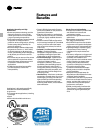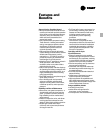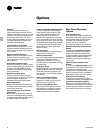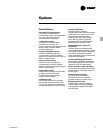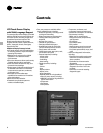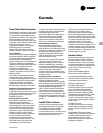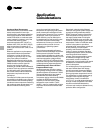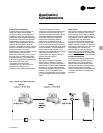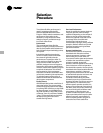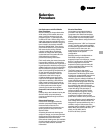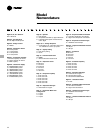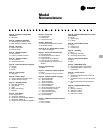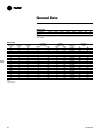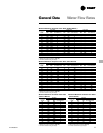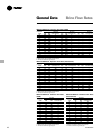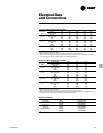
RLC-PRC020-EN12
Selection
Procedure
Trane Series R chiller performance is
rated in accordance with the ARI
Standard 550/590-2003 Certification
Program. Chiller selection assistance and
performance information can be
obtained by using the Series R chiller
selection program, available through
local Trane sales offices.
Performance
The computerized Series R chiller
selection program provides performance
data for each possible chiller selection at
both full-load and part-load design points,
as required.
It should be noted that changing the
number of water passes or the water
flow rates will generally alter the
performance of a particular chiller. To
attain maximum benefit from the wide
range of chiller models and options
available, designers are encouraged to
first develop performance specifications
and then use the chiller selection program
to optimize all selections. This will help
ensure selection of the compressor-
evaporator-condenser combination that
most closely meets the job requirements.
To optimize system performance, all
selections should also be balanced with
other system components.
Fouling Factors
ARI Standard 550 includes a definition of
clean tube fouling. The recommended
standard fouling adjustments are 0.0001
hr-sq ft-deg F/Btu (0.0176 sq m-deg C/kW)
for the evaporator and 0.00025 hr-sq ft
deg F/Btu (0.044 sq m-deg C/kW) for the
condenser, from an increment of 0.0000
“clean.” Chiller specifications should be
developed using the most current
standard fouling factors.
Part Load Performance
Actual air-conditioning system loads are
frequently less than full-load design
conditions. Depending on the number of
chillers on the job and the load profile,
chillers may operate at full load a small
percentage of the time. With their
excellent part-load performance
characteristics and highly energy-efficient
operation, Series R chillers can provide
significant operating savings at these
part-load conditions.
System Considerations
Part-load chiller operation is frequently
associated with reduced condenser
water temperatures. However, rather
than focusing only on the chiller, it is
important to balance these temperatures
to achieve the most efficient system
operation possible. At part-load
operation, the heat rejected to the cooling
tower is less than at full-load operation.
Part-load chiller operation is also typically
associated with reduced outside wet bulb
temperatures, resulting in improved
cooling tower performance. The net result
of reduced heat rejection and lower wet
bulb temperatures can be cooler
condenser water entering the chiller,
ultimately improving unit performance.
However, this does not improve pump or
tower efficiency. To achieve the most
efficient system operation possible, it is
best to minimize the total power draw of
the chiller, tower, and pumps, which may
not mean limiting the condenser water
temperature to what the tower can
provide. To determine specific unit and
system part-load performance for chiller
selection purposes, use the Series R
chiller computer selection program or
contact the local Trane sales office.



